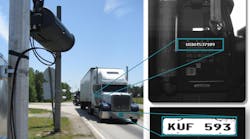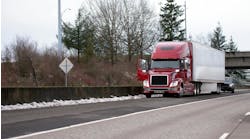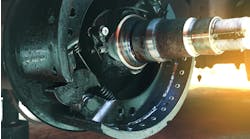Editor’s note: This is the third part in a series leading up to International Roadcheck 2019. Read Part 1 and Part 2 of the series.
One challenge when it comes to motor vehicle enforcement is the number of trucks on the road compared with the number of inspectors. “These scale houses can see 4,000 trucks a day. Some in California see 1,000 an hour,” said Brian Mofford, vice president of government experience for Drivewyze and Intelligent Imaging Systems.
When they are choosing a vehicle to inspect, law enforcement wants to pull a vehicle with the most safety risks. Technology can help inspectors prioritize who to stop.
“We don’t want to be stopping a truck that is in great shape. Let that driver get down the road. He is making money,” said Michael Forman, southern region commander for the enforcement division of the Mississippi Dept. of Transportation.
Bypass technology gives inspectors safety data, and inspectors also utilize weigh-in-motion, license plate readers, and thermal imaging sensors that can detect problems with brakes or tires, CVSA’s Wirachowsky said.
Drivers need to be well-trained on items that are evaluated during inspections, and what action they should take when they notice potential issues, according to Dave Covington, Noregon Systems chief technology officer.
“Your maintenance practices, combining in-shop and over-the-road technology, should leave you confident you can navigate a roadside inspection without concern,” he said.
Forman suggests carriers invite an officer to their safety meetings. “It builds a really good relationship between enforcement and the industry,” he said.
Lee Sarratt, J.B. Hunt’s director of safety, draws on data to prioritize his relationship building. With information from Drivewyze, Sarratt can see where drivers are receiving the most inspections and which violations they have received.
“We go find the captain and set up a day at the weigh station, or bring one of their officers to our facilities and put our drivers and managers through a mock lane. They show our drivers what they’re looking for,” he explained.
Commercial Vehicle Safety Association, which organizes the annual International Roadcheck, has launched classes to help fleets and drivers better understand inspections, which Scott Dewey, FedEx Freight’s manager of safety process and compliance, praised for providing “great insight.”
This is the third part in a series leading up to International Roadcheck 2019. Tomorrow, we’ll take a deeper look at the inspection process. Read Part 1 and Part 2 of the series.



